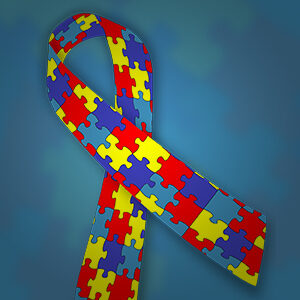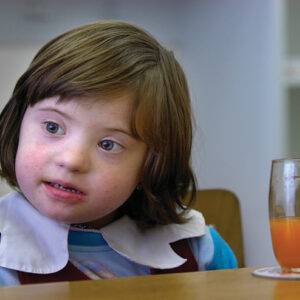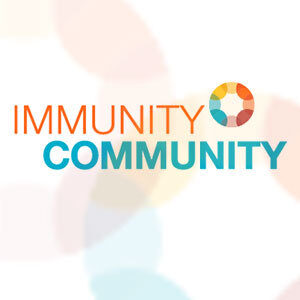Contact Us
Overview
Autism spectrum disorder, or ASD, is a developmental disability that can make communicating and socializing with others more difficult for those living with the condition. People with ASD may learn, communicate and act differently than most people.
Basics
ASD is a broad term* for what used to be three different conditions: autistic disorder, Asperger syndrome, and pervasive developmental disorder not otherwise specified (PDD-NOS). Those with ASD may experience challenges with communication and social interactions.
It is especially important for parents and caregivers to understand the developmental milestones that a child should be reaching and be familiar with the early signs of autism spectrum disorder.
ASD includes a range of symptoms, skills and levels of disability. People with ASD tend to show two types of behaviors. These include repeating certain behaviors and difficulty communicating with others. Those who repeat behaviors may tend to focus on objects and interests and to repeat certain actions or behaviors. Those who have more difficulty socializing with others may have ongoing social problems, including talking to and understanding other people. Symptoms can range from mild impairment to severe disability.
ASD begins before age 3 and is a lifelong condition, although symptoms may improve over time. Some children show signs of ASD during the first few months of their lives while others may not develop symptoms until 24 months.
*Autism Spectrum Disorder is the official definition provided by the American Psychiatric Association’s Diagnostic and Statistical Manual of Mental Disorders (DSM-5).
What Causes ASD?
Scientists do not have a clear understanding of the causes of ASD. There are several risk factors that may contribute to ASD, including a person’s family history and environment. Research shows that ASD is not caused by parenting practices or vaccination.
Risk factors include:
- Being a boy—boys are more likely to have ASD than girls
- Family history. About 20% of children with ASD also have inherited conditions including Down syndrome, fragile X syndrome and tuberous sclerosis
- Parental age. Having a mother 35 or older and/or a father who is 40 or older at the time of birth increases an individual’s likelihood of developing ASD
- Having brothers and sisters with ASD
Signs and Symptoms
There are many symptoms that can indicate ASD, but no single symptom means that an individual has ASD. The symptoms depend on the severity of the disorder.
Symptoms of ASD include:
- No babbling by age 1
- No single words by 16 months or no two-word phrases by age 2
- No interest in objects by age 1 (child doesn’t point at objects, doesn’t look at objects when another person points at them)
- Not smiling or responding to name
- A loss of language or social skills
- Not wanting to be held or cuddled
- Poor eye contact
- Unusual focus on objects including wanting to line up toys or other objects
- Difficulty making friends with peers, having conversations with and understanding the emotions of others
- Problems playing with others or participating in imaginative play
- Unusual language use, including repeating phrases
- Being unusually focused on certain objects or subjects
- A strong desire to keep schedules or rituals and difficulty dealing with change
- Touchy about light, clothing, noise or temperature
While ASD presents challenges for those who have it, it is common for people with ASD to also have unusual abilities. According to the Centers for Disease Control, 46 percent of children with ASD have above-average intelligence. Individuals with ASD are often strong learners, with the ability to learn in detail and remember information for long periods of time. Those with ASD may also be good at math, science, music or art.
Individuals who do not have ASD may have some of these symptoms, that‘s why it’s important to talk to a doctor.
Diagnosing Autism Spectrum Disorder
There is no medical way to test for ASD, so doctors look at a patient’s behavior and development. ASD can be diagnosed as early as 18 months. A diagnosis made after age 2 is usually reliable. However, many individuals find out they have ASD later in life.
There are two steps to diagnose ASD in children. First, doctors look at whether a child is learning basic skills at the expected times. They use a short test to see how a child speaks, learns, behaves and moves. The CDC recommends that all children be tested at 9 months, 18 months, and 24 months or 30 months with ASD tests at 18 months and 24 months. Next, a doctor will review the patient’s behavior and interview the parents. A team including a psychologist, neurologist, psychiatrist, speech therapist and others will evaluate the child by using multiple tests. These may include genetic testing, hearing and vision tests and neurological testing. Hearing problems can cause some of the same symptoms as ASD, so it is important to test a child’s hearing.
Diagnosing adults is a more difficult process as ASD symptoms often overlap with other mental health disorders. Adults who have noticed possible symptoms of ASD should speak with a doctor and request a referral for ASD testing.
Treatment
While there is no cure for ASD, there are many different types of treatments, including medications and therapy. Everyone with ASD is unique and requires individualized treatment.
Sources
Autism Spectrum Disorder | CDC | https://www.cdc.gov/ncbddd/aut...
Autism Spectrum Disorder | NIH | https://www.nimh.nih.gov/healt...
What is Autism spectrum Disorder? | American Psychiatric Association | https://www.psychiatry.org/pat...
Autism, a Conversation with Ed Asners
In Washington State
About 8,000 to 12,000 children in Washington state have some form of ASD.
Sources
Autism | DOH | https://www.doh.wa.gov/YouandY...
Recommendations
As children grow, they pass many developmental milestones for how they play, learn, speak and act. These milestones usually occur at similar ages and in a certain order. If a child isn’t passing these milestones, it may be time to speak to a doctor and find out why. Visit the Ask Now campaign page to learn more.
Related Facts
1 in 59 children has been identified with ASD.
It is too soon to tell if the percentage of children identified with ASD is still increasing or has stabilized.
Sources
Autism Data & Statistics | CDC | https://www.cdc.gov/ncbddd/aut...

Northwest Autism Center
Specific to autism spectrum disorder, this is an integrated community provider of education, service and information for Spokane and the surrounding region


